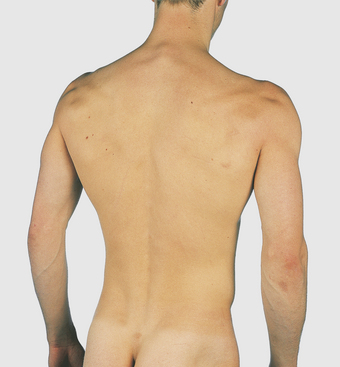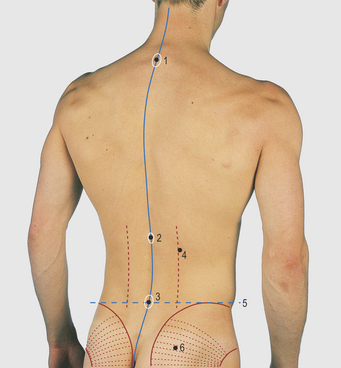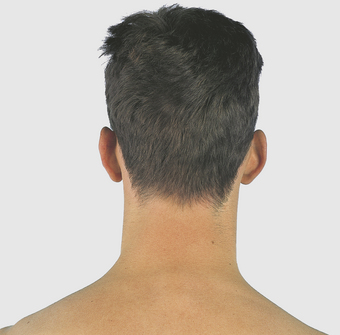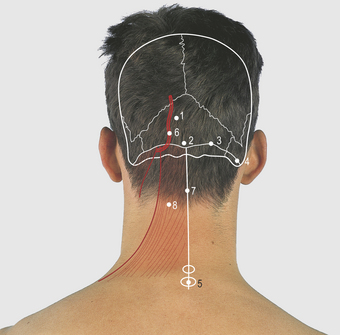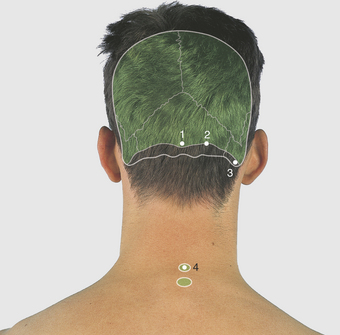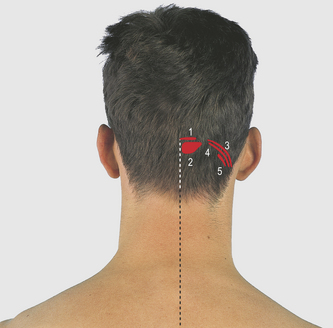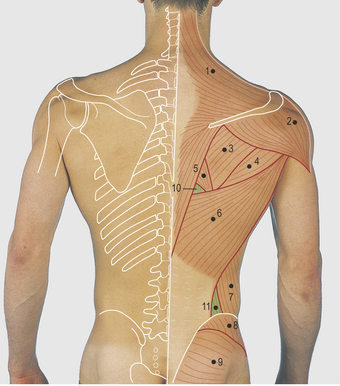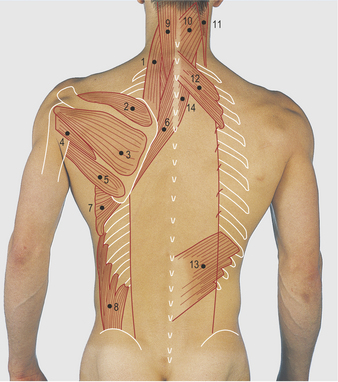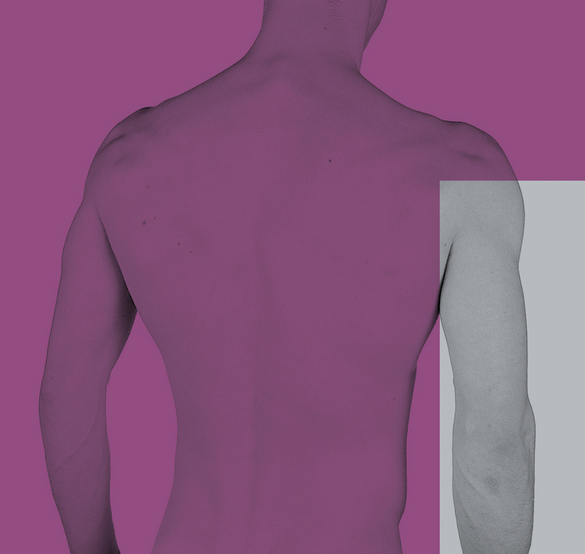
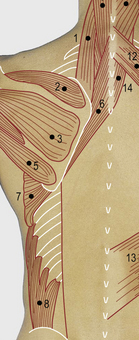 Chapter 6 Back
Chapter 6 Back
The embryonic and early fetal vertebral column is curved, concave ventrally (flexed) throughout its length – the primary curvature. Two secondary curvatures, concave dorsally, develop in the cervical and lumbar regions. The cervical curve starts as early as the 10th week ‘in utero’. After birth, further extension in the cervical region is produced by the muscles raising the head, and extension in the lumbar region accompanies the adoption of the erect posture. The thoracic and sacral regions retain the primary curvature (Figs 6.1 and 6.2).
Posterior aspect of the neck
The posterior aspect of the neck is bounded superiorly by the superior nuchal line of the occipital bone extending medially to the external occipital protuberance and laterally to the mastoid process (Figs 6.3–6.6).
The trapezius muscle has a wide attachment (Figs 6.7 and 6.8, see also p. 70). It lies superficially and is attached superiorly to the medial third of the superior nuchal line, to the ligament nuchae and the spines and interspinous ligaments of the cervical and thoracic vertebrae. Laterally, it is attached to the acromion and spine of the scapula, both of which are palpable from the tip of the shoulder to the medial angle of the bone. The sternocleidomastoid muscle is attached to the lateral third of the superior nuchal line and to the mastoid process. The occipital artery emerges medial to the muscle to pass over the skull; it is palpable at this site.
